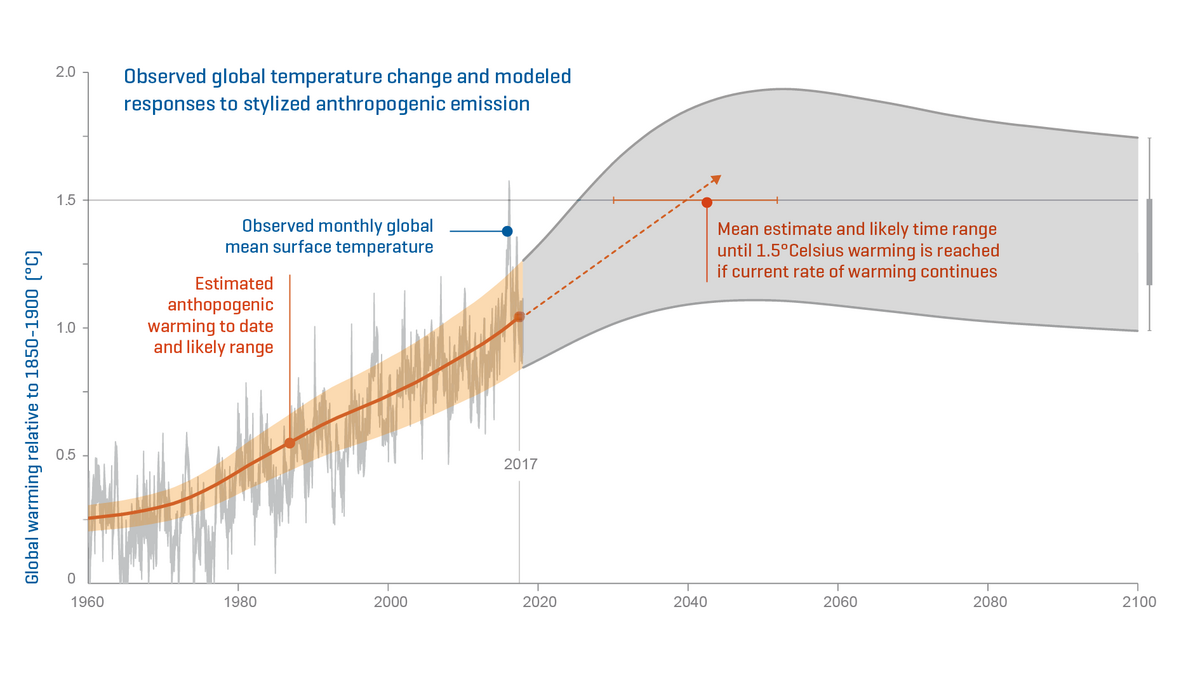GEOMAR Helmholtz Centre for Ocean Research Kiel
Communication and Media
Fon 0431 600-2807
Mail media(at)geomar.de
The 1.5 Degree Goal - From Knowledge to Action
The results of research in recent decades leave no doubt that the temperature on our planet is rising and that humankind is largely responsible for this. It has also become clear from studies of Earth's history that warming is proceeding very rapidly and could soon set in motion irreversible changes in the climate system, such as a complete melting of the Greenland ice sheet. Based on these research findings, climate scientists worldwide are urging action to limit global warming to 1.5 to a maximum of 2 degrees. But what measures are needed to achieve this goal?
Net Zero and Negative Emissions

The 2018 Intergovernmental Panel on Climate Change (IPCC) Special Report Global Warming of 1.5 ºC made clear that the 1.5 degree target is still achievable, but that this will require a reduction in greenhouse gas emissions to "net zero" by mid-century. "Net zero" means offsetting unavoidable remaining emissions from industry, transport and agriculture by taking CO2 out of the atmosphere elsewhere, also known as "negative emissions." There are several terrestrial and marine approaches and methods by which the removal of carbon from the atmosphere can be achieved, most commonly referred to as Carbon Dioxide Removal (CDR) or Negative Emissions Technologies (NETs). These include storing carbon dioxide in the seabed, promoting marine plant growth (blue carbon management), alkalinization of the ocean, or artificial upwelling of nutrient-rich deep water.
Within the framework of projects such as Marine carbon sinks in decarbonisation pathways (CDRmare), SeaStore, or Ocean-based Negative Emission Technologies (OceanNETs), scientists at GEOMAR are investigating the potential, but also the risks of such methods. Without them, it is no longer possible to achieve a 1.5 degree goal for plausible scenarios. But even if we reach the net zero target, uncertainties remain about the further development of the planet's temperature. Here, the long-term memory of the oceans in terms of heat and carbon uptake plays a crucial role.
In Focus – Nadine Mengis
Dr. Nadine Mengis has been leading an Emmy Noether junior research group at GEOMAR since October 2021. With her research project FOOTPRINTS, she and her team aim to understand how human actions to remove carbon dioxide (CO2) will affect our greenhouse gas emissions and thus the climate if we want to reach our 1.5 degree climate goal. The results support decisions on measures to limit global warming. Furthermore, she is also involved in the ASMASYS research collaborative in the framework of the CDRmare project. In addition to her research, Nadine Mengis is also committed to communicating her complex topic.


